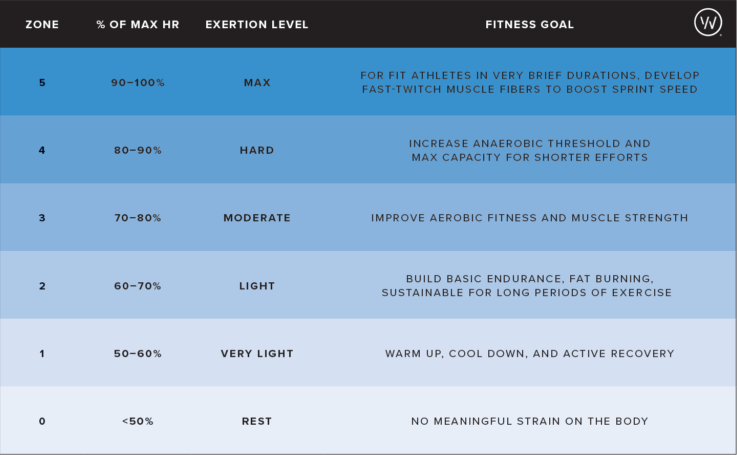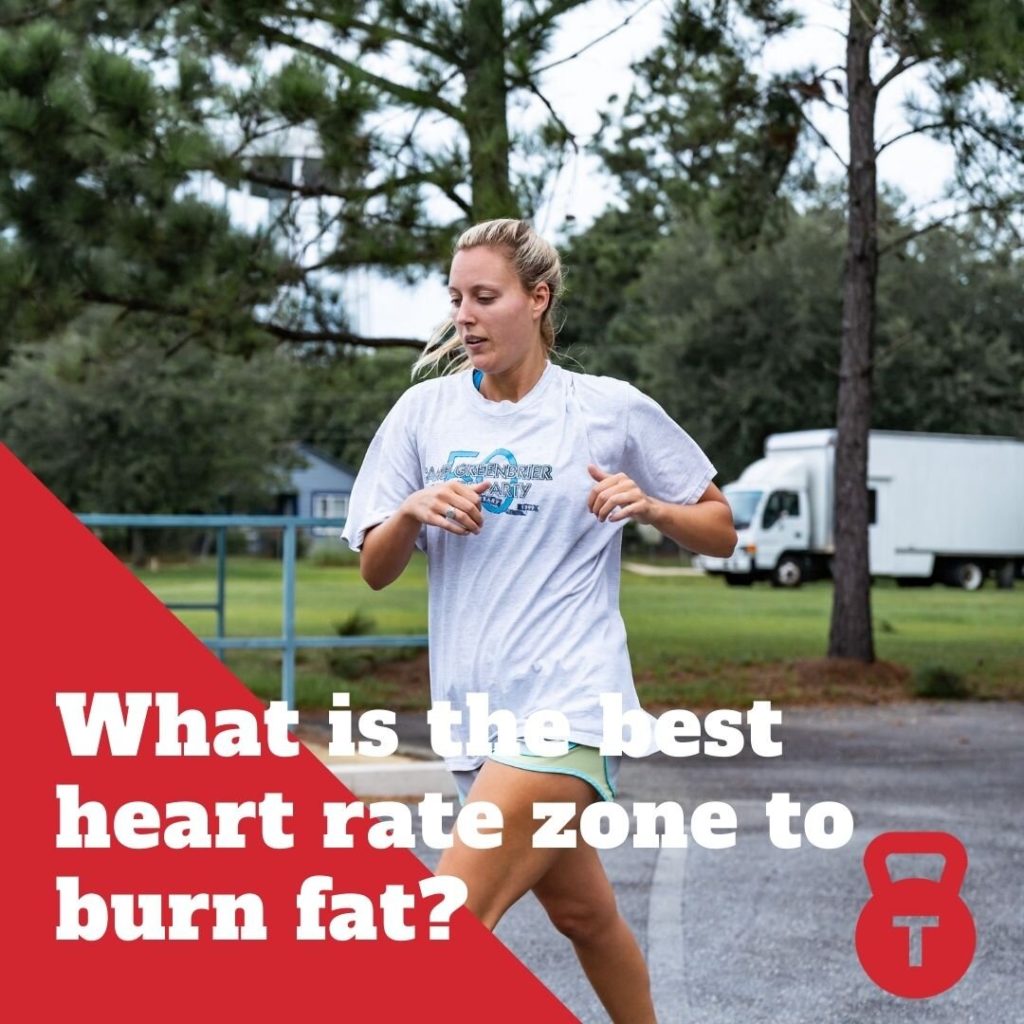
Wearable technology has taken over the fitness industry over the last few years, and people are using this technology daily to track various fitness metrics. One popular metric (and in my opinion the most useful) is heart rate tracking. Entire fitness franchises have been built on HR tracking and staying in the infamous “fat burning zone”. But what actually is the best heart rate zone for burning fat?
First, let’s define the different heart rate zones. We can categorize different heart rate zones based off a percentage of your maximum heart rate. Your max heart rate is the greatest number of beats per minute your heart can possibly reach during all-out strenuous exercise. To find your estimated maximum heart rate, we use a formula called the Fox Formula, 220 – age = Maximum Heart Rate (MHR). For example, if you are 45 years old then, 220-45 = 175 estimated maximum heart rate. Using this data, we can then establish different heart rate zones based off of a percentage of our estimated maximum heart rate.
The optimal heart rate zone for burning fat is generally considered to be around 70% of your maximum heart rate. Above you’ll see a chart defining the 6 different heart rate zones based off of a percentage of your MHR and the goal associated with each HR Zone.
While there is a specific heart rate zone for working out that will technically burn more fat than others, it is not necessary to try to target this HR zone in order to lose weight. As you can see, each HR zone has it’s own specific benefits and many of these HR zones have quite a bit of overlap with the others in terms of the adaptations that take place in the body.
So how does the fat burning zone work? Your body gets fuel from two main sources during exercise, carbohydrates and fats. Carbohydrates offer “fast” energy for the body and are converted to fuel quickly, while fats take longer to breakdown and convert to useable energy slowly. For higher intensity efforts and shorter bursts, your body is primarily using carbohydrates as its energy source. As your workout continues, and intensity levels start to drop, your body will begin to use fat as it’s primary energy source. All this really means is that at lower intensities and during longer sustainable exercise, of the calories you burn, a greater proportion will come from fat.
However, the percentage of fat you’re burning relative to carbohydrates is not what determines weight loss. To lose weight you must be in an energy deficit, which means you simply must burn more calories than you consume. While you’ll burn a greater proportion of your calories from fat at a lower intensity, you’ll burn more calories overall working at a higher intensity. That means you’ll lose more weight working out at a higher intensity and burning more calories, than staying in the so-called “fat-burning zone.” Additionally, weightlifting and resistance training can contribute to losing weight by ramping up your metabolism into high gear to help repair damage done to muscle tissue during strenuous training.
While the fat burning zone isn’t the most useful for losing weight, it is extremely important in building endurance, aiding with recovery, and also improving cardiovascular health. Think longevity.
In summary, the “fat burning zone” is not the optimal HR zone to lose weight. While your training should include long steady state aerobic work for cardiovascular health, higher intensity exercise and resistance training are better at promoting weight loss due to an overall higher caloric burn.
Sources:
https://www.nsca.com/education/articles/kinetic-select/aerobic-endurance-training-strategies/
https://www.nsca.com/education/articles/kinetic-select/sport-performance-and-heart-rate/
https://www.whoop.com/thelocker/fat-burning-heart-rate-zone/





